I absolutely love chickpeas, also known as garbanzo beans. These protein-packed legumes have a mild, nutty flavor that goes well in a variety of dishes, including hummus, soups and stews. Because of the time involved in preparing dried chickpeas, most people resort to canned varieties. The trouble with canned chickpeas is that many contain additives for preservation, as well as high sodium content from added salt. Making chickpeas from scratch is a much more natural and healthy way to go, and it’s surprisingly easy. This recipe, photo tutorial and video will show you the whole process, step-by-step.
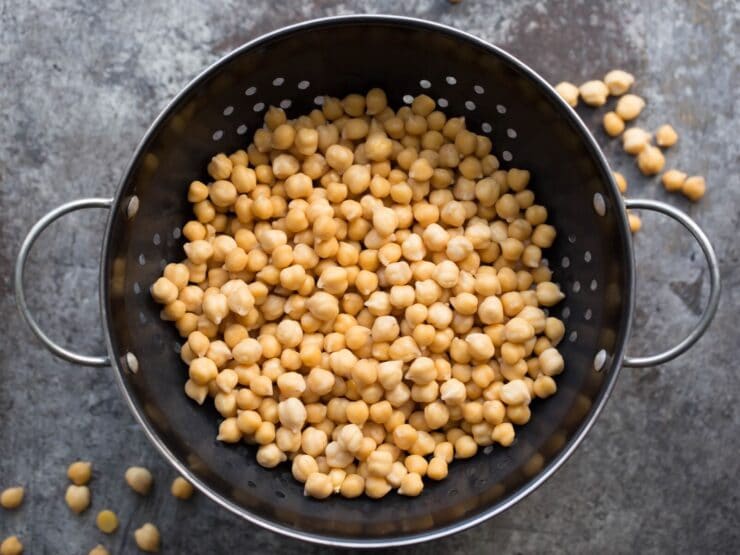
Here is a simple method for quick-soaking and preparing chickpeas for recipes. Chickpeas are soaked before boiling for two reasons – one, they need to be softened before they boil, and two, pre-soaking helps to make the beans more digestible. You can soak them quickly, as described below, or overnight if you prefer. My friend Gila Ronel, a doula and holistic nutritionist in Israel, soaks the beans for a couple of days until they begin to sprout. She says that the nutritional value improves when the chickpeas are sprouted. If you try this, you’ll need to use cold water, not the quick soak method. Make sure you change the water they are soaking in twice daily to keep bacteria at bay. When shopping for your chickpeas, make sure you use a bulk bin with a high turnover rate. The older the chickpeas are, the less tender they will cook. Beans that have been sitting in a pantry for a year or longer tend to go stale and will not cook up as nicely.
Most recipes call for chickpeas that have been soaked and boiled until tender (falafel is one notable exception– chickpeas should only be soaked for falafel, not cooked). I often make a large batch of cooked chickpeas, then refrigerate or even freeze for future use. I have covered the instructions for storing and freezing below. You will notice that home-prepared chickpeas taste much better than the canned variety, and you’ll have more control over the salt content. Preparing the beans this way is also more affordable… you’ll save over 50% by preparing them yourself. Frugality rocks!
Recommended Products:
We are a participant in the Amazon Services LLC Associates Program, an affiliate advertising program designed to provide a means for us to earn fees by linking to Amazon.com and affiliated sites. As an Amazon Associate I earn from qualifying purchases.
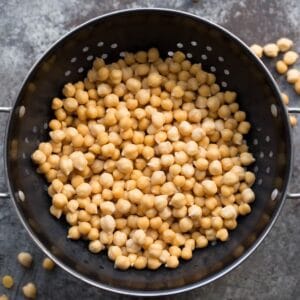
How to Soak, Cook, Freeze and Store Chickpeas
Ingredients
- 4 cups dried chickpeas (you may use more or less as needed-- 4 cups dried equals roughly 12 cups cooked beans)
- Salt (optional)
NOTES
Instructions
- Before cooking, you will need to soak the beans. You can soak them overnight, if you have the time. Place them in a large bowl and cover with cold water.

- The chickpeas will expand to over double their size, so make sure you cover by several inches of water to allow for expansion. Cover the bowl with a clean towel and let them soak overnight. Drain the water and rinse the beans before cooking.

- To quick soak the beans, you will need 1 hour. Place the chickpeas into the bottom of a large pot and cover with water. The chickpeas will expand to over double their size, so make sure you cover by several inches of water to allow for expansion.

- Bring the chickpeas to a boil. Let them boil for 5 minutes.

- Remove from heat. Let the beans soak in the hot water for 1 hour.

- Drain the water and rinse the beans before cooking.

- When you are ready to cook your soaked beans, place them in a large pot and cover with several inches of water. I use about 1 quart of water per 1 cup of soaked beans. Bring to a boil, then reduce to a simmer. Add salt, if desired. I use about 1/8 teaspoon of salt for every 1 quart of water and 1 cup of soaked beans. You may like more salt to taste, or none at all to keep them "au naturel."

- Let the beans cook for 60-90 minutes until desired tenderness. Certain dishes require very tender beans (like hummus), while other dishes call for firmer beans (like stews and soups that need to be cooked over long periods of time). Adjust cooking time to achieve the desired tenderness for your purposes. If you are freezing the beans, keep in mind that they will freeze best if they are on the firmer side, rather than completely soft. As you cook them, the beans will continue to expand a bit. Keep an eye on the water level and add additional water as needed to keep the beans covered. When the beans are fully cooked, drain in a colander and allow to cool.

- To store cooked beans in the refrigerator, place them in a covered airtight container or a plastic zipper bag without any additional liquid. Cooked beans will keep 3-4 days in the refrigerator.To store the beans longer for future use, freeze them. Remove as much moisture as possible from the beans by patting them dry with paper towels. Place the beans in reusable or plastic zipper bags spread out in single layers; you don't want to pile the beans on top of each other or they will stick to each other. Freeze, laying the flat single layer down to keep the beans from freezing together. You can freeze several bags this way, one laying flat on top of another.

- Alternatively, you can spread out the beans in a single layer on a baking sheet lined with parchment and freeze the beans for 30 minutes.

- Once they are firm, pour them into a plastic zipper bag or airtight container, seal, and put immediately back into the freezer. Using this method, you don't need to put the chickpeas in a single layer-- because they are already half frozen, they will not stick together.

- Frozen beans will keep for up to 1 year.

Nutrition

tried this recipe?
Let us know in the comments!
Nutritional information per serving is for 1 cup of cooked chickpeas (1/3 cup dried chickpeas)– values and cook times will vary based on how what cooking method is used.
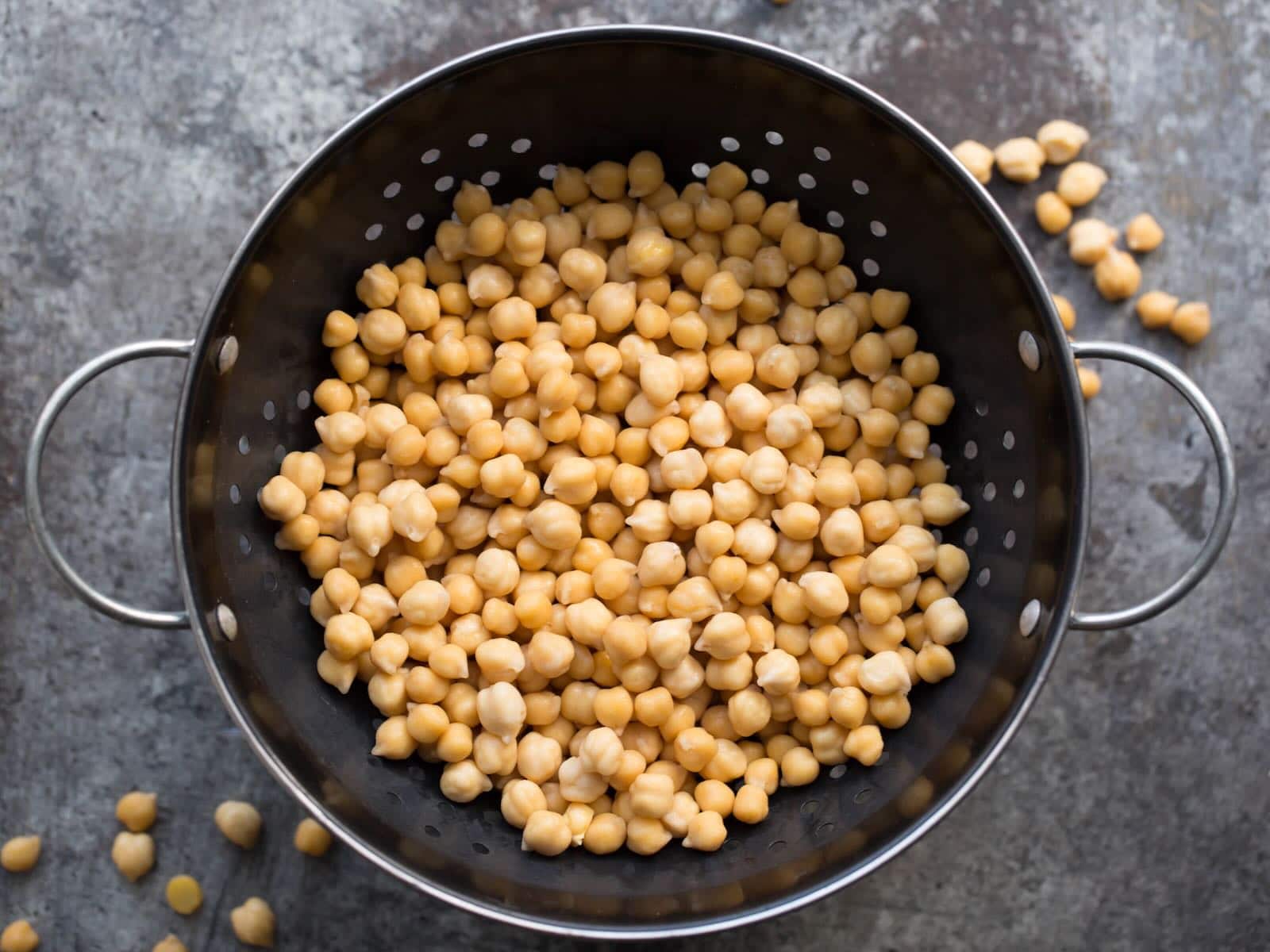

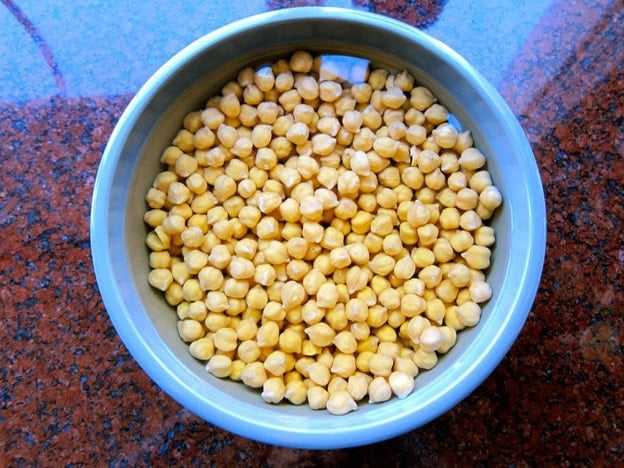

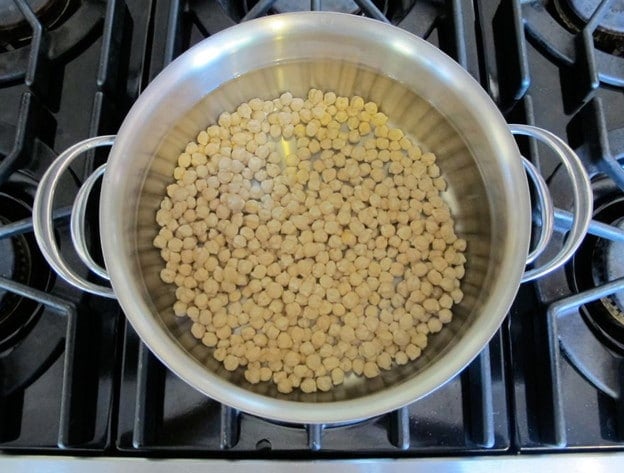


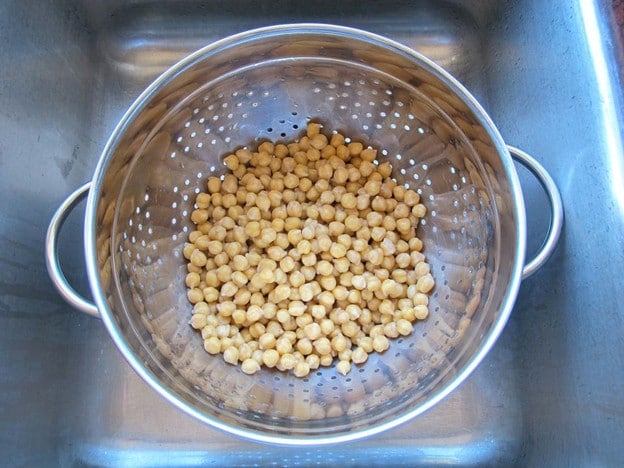
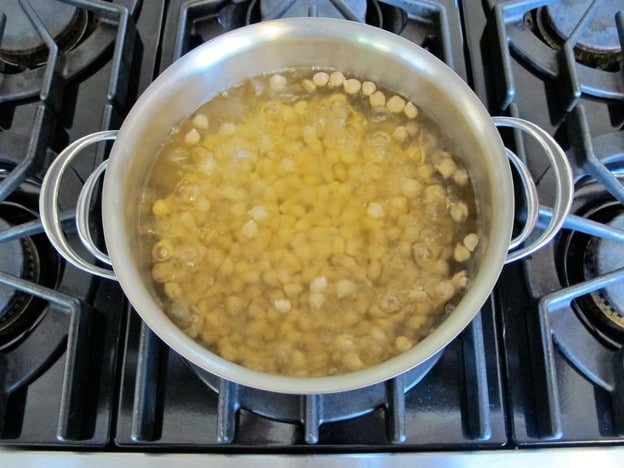
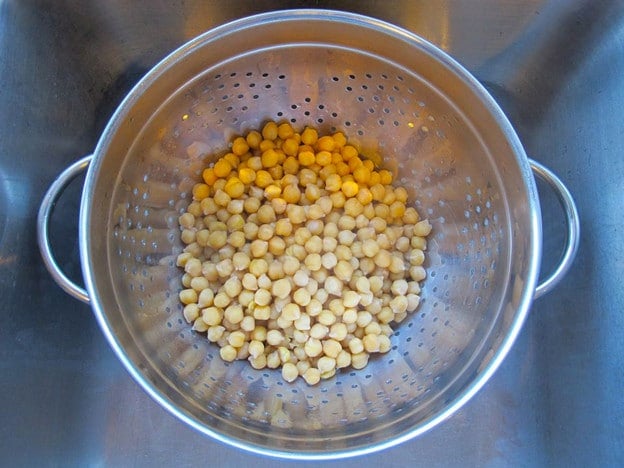
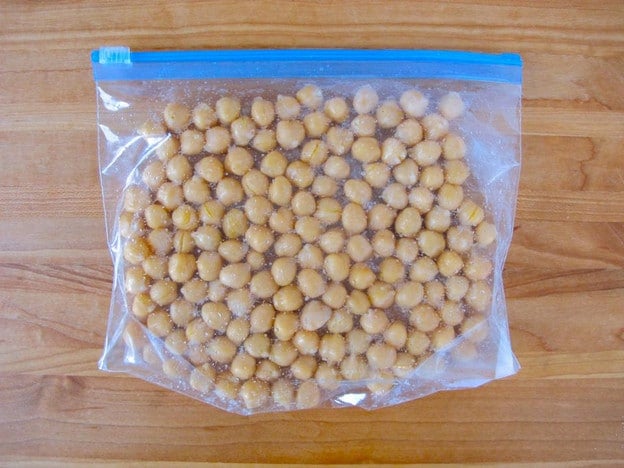
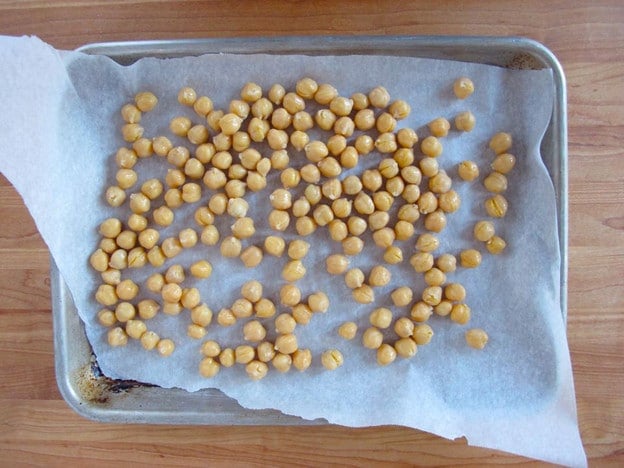
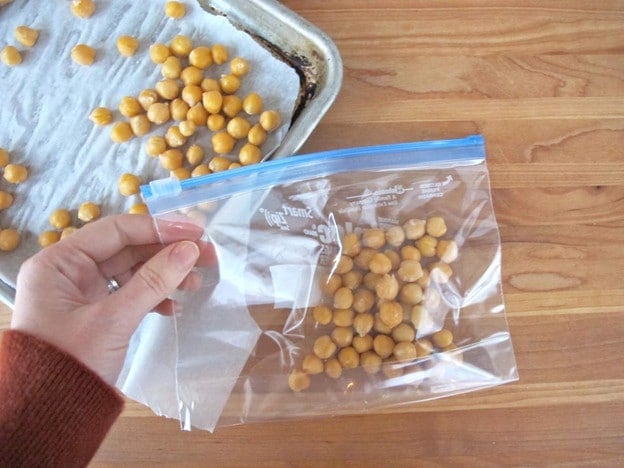



Just thought I would add my 2 cents, for what it’s worth regarding another processing step for beans/legumes/whole grains, in regards to phytic acid (an anti-nutrient). Not only do I soak and sprout my beans, but after that, I cook them and then ferment the beans using a ferment liquid I make out of crushed rye berries (they are full of phytase) and hot water. It takes about 24 hours for the germination to take hold in the liquid itself, but then, the ferment can be added to cooked beans, etc. to ferment for at least 24 hours. Why am I doing this? It’s because I am a non-secretor (Lewis gene) of my blood type, which affects at least 20% of the population at large. So, for us non-secretors, that means that the phytic acid will bind with minerals in the body, such as calcium, magnesium, etc. and set up a lot of tooth decay. Part of the reason is that non-secretors do not have bifida bacteria in their intestinal flora that the secretors (80% of population) have naturally, and thus, do not have the dental decay issues like non-secretors. But by soaking, sprouting and fermenting, you can get rid of 90 to 96% of the phytic acid (an anti-nutrient). These procedures were a big part of traditions that people used for a long time prior to canning and ready made food industry.